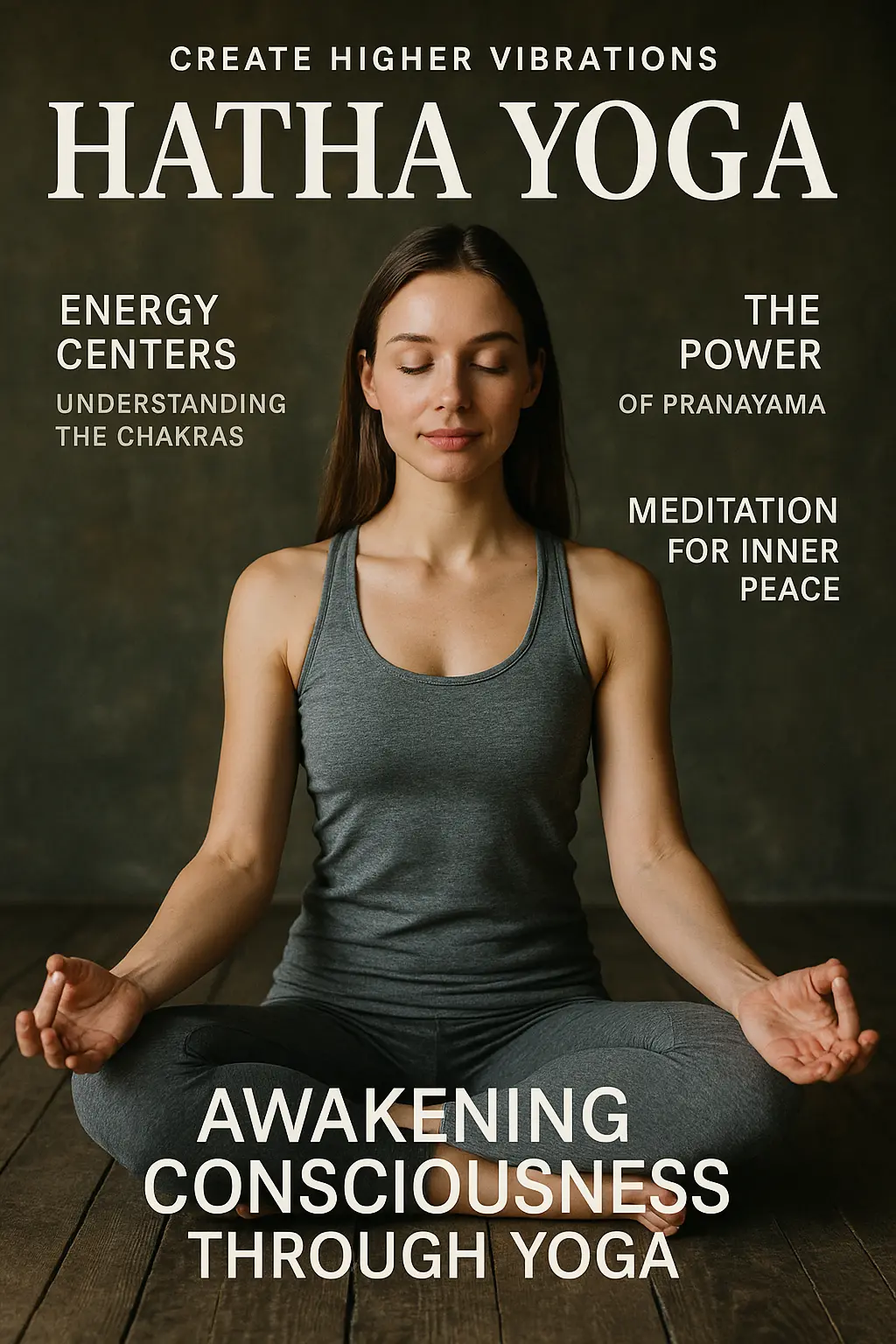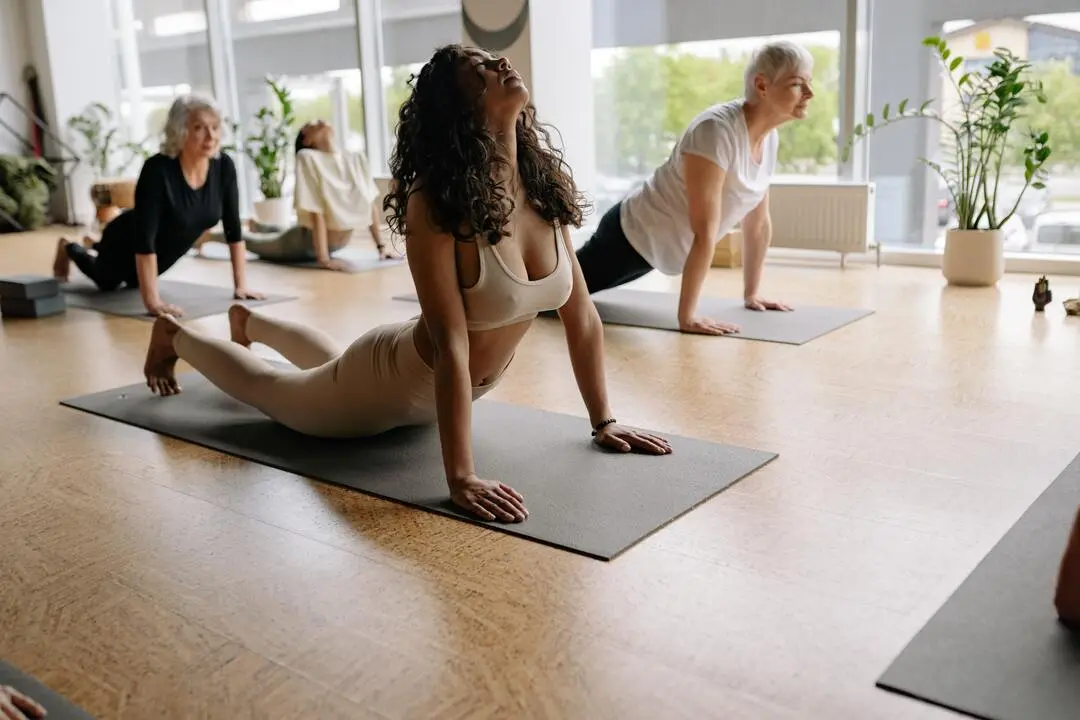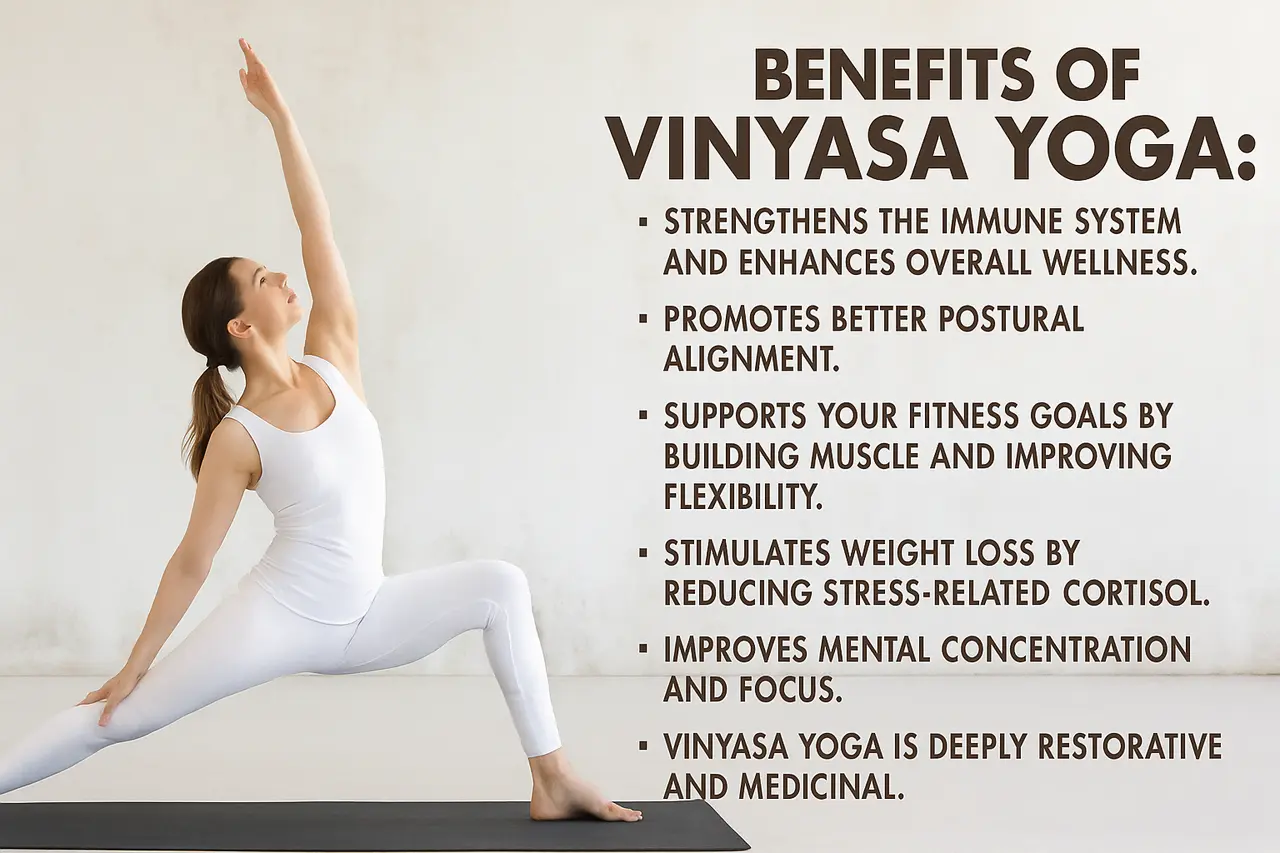What is Vinyasa Yoga? A Beginner-Friendly Fast-Paced Flow

If you are considering trying yoga but are unsure about where to start, vinyasa yoga may be an ideal choice. This type of yoga is perfect for beginners, offering a great way to build strength, improve flexibility, and boost focus. It highlights smooth and fluid transitions between poses.
This article provides a guide to vinyasa yoga, covering its benefits and fundamental poses, ensuring you feel prepared and confident for your first class.
What Is Vinyasa Yoga?
Vinyasa yoga combines breath and movement into a seamless, continuous sequence.
Each pose flows into the next without pause.
You stay present, move with purpose, and breathe with intention.
This style builds strength, supports mobility, and improves focus.
The constant motion raises your heart rate and trains your mind to stay with the moment.
Over time, it sharpens awareness and helps release stress stored in the body.
Vinyasa isn’t about perfection.
It’s about presence.
And learning how to stay with yourself through every shift.
Vinyasa yoga integrates mindfulness, movement, and breath to create an experience that is simultaneously grounding and energizing. Does any of this resonate with you?

Is Vinyasa Yoga Good for Beginners?
Yes, Vinyasa yoga can be a solid choice for beginners, especially when the class is labeled “all levels” or “beginner-friendly.”
The key is pacing and guidance. In a well-structured Vinyasa class, the teacher offers options. You’ll be shown how to modify poses, slow down transitions, and focus on your breath instead of trying to keep up with others.
You don’t need to be flexible or experienced. What matters most is your willingness to show up, breathe, and move with intention.
If you’re new to yoga, look for classes that focus on alignment and breath awareness rather than speed or intensity. Some teachers even offer slower Vinyasa flows designed to help you build confidence and body awareness.
Over time, your strength, coordination, and focus improve, and so does your ability to flow with ease. Everyone starts somewhere. And in Vinyasa, each breath is a chance to begin again.
Benefits of Vinyasa Yoga
Vinyasa yoga offers a range of benefits that enhance both physical and mental well-being. Here’s how incorporating this dynamic practice into your routine can be advantageous:
1. Enhances Cardiovascular Health
The continuous flow of movements in Vinyasa yoga elevates the heart rate, providing a moderate-intensity cardiovascular workout. This not only strengthens the heart but also improves overall cardiovascular fitness.
2. Builds Muscle Strength
By engaging various muscle groups through bodyweight exercises, Vinyasa yoga helps in building and toning muscles. Poses like plank and warrior sequences target the core, arms, legs, and back, contributing to overall strength.
3. Increases Flexibility
The diverse range of poses in Vinyasa yoga stretches different muscle groups, enhancing flexibility and joint mobility. Regular practice leads to a greater range of motion and reduced muscle stiffness.
4. Reduces Stress
Synchronizing breath with movement in Vinyasa yoga promotes mindfulness and mental relaxation. This practice can alleviate stress and anxiety, leading to improved mental clarity and a sense of calm.
5. Improves Sleep Quality
The combination of physical exertion and mental relaxation in Vinyasa yoga can lead to better sleep patterns. Practitioners often experience deeper and more restful sleep.
6. Enhances Posture
By strengthening core muscles and promoting body awareness, Vinyasa yoga helps in correcting posture. This can lead to reduced back and neck pain associated with poor alignment.
7. Boosts Mental Focus
The mindfulness of matching breath with movement improves concentration and focus. This helps with daily tasks and making decisions.
8. Supports Weight Management
Vinyasa yoga is a type of moderate exercise. It can help with weight management by burning calories and boosting metabolism.
Incorporating Vinyasa yoga into your routine can lead to these holistic benefits, contributing to a balanced and healthy lifestyle.

Vinyasa Yoga Basic Poses for Beginners
If you’re new to vinyasa yoga, you may be wondering what poses to expect in your first class. While each class may vary, there are some common poses that you’ll likely encounter in a beginner-friendly vinyasa class.
Here are 10 vinyasa yoga poses for beginners to get you started on the mat:
These poses are just a starting point for your vinyasa yoga practice. As you get more comfortable, explore advanced poses and sequences to challenge yourself and grow your practice.
Remember to always listen to your body and work at your own pace.
Don’t hesitate to ask your teacher for modifications or variations that suit your needs.
Discover The Master Within You
With a Self Mastery Program.
Self-Mastery Coaching gives you the space, tools, and guidance to grow, reflect and discover your values and inner strength.
Learn More
What are The Different Styles Of Vinyasa Yoga
Vinyasa yoga comes in various styles, each offering a unique approach to breath-synchronized movement. Here are some of the most popular types:
Each style has its rhythm and focus, allowing practitioners to choose what resonates most with their needs. Do any of these align with your practice or interests?

What Is Vinyasa Yoga vs Vinyasa?
The word vinyasa gets used in two different ways. Understanding the difference clears up a lot of confusion.
Vinyasa Yoga refers to a full style of practice.
A vinyasa (lowercase) is a specific transition sequence within that style.
Let’s break it down.
Vinyasa Yoga (the style):
A vinyasa (the transition):
Both meanings connect through breath and movement. But one refers to the full experience. The other, to a single connecting thread within that experience.
The Vinyasa Flow and Ashtanga Yoga
Vinyasa yoga is often compared to Ashtanga yoga, another flowing style that follows a set series of poses.
While both link breath with movement, Ashtanga is more structured and intense. It follows a fixed sequence that’s repeated in the same order each time.
Vinyasa, by contrast, is more flexible. Teachers often change the sequence from class to class, allowing for more creativity and variation in each session.
Subscribe to Create Higher Vibrations!
Get Inspiration and Practical advice straight to your inbox.
disadvantages of vinyasa yoga
Vinyasa yoga can be energizing, but like any practice, it has its challenges. Knowing what to look out for helps you stay safe, focused, and intentional.
Here are a few common issues and how to approach them:
1. Safety and Joint Protection
Moving too quickly without awareness can lead to strain, especially in the wrists, shoulders, or knees.
Solution: Focus on form over speed. Slow down transitions and listen to your body. If something feels off, pause and modify.
2. Repetitive Sequences
Sun Salutations and other flow sequences are often repeated several times in a class. While this generates warmth, it may become repetitive or result in overuse injuries.
Solution: Use repetition as a way to deepen awareness, not just build endurance. Break up patterns when needed with rest or alternate poses.
3. Skipping Alignment
Vinyasa emphasizes movement over holding postures, which can sometimes mean less time learning proper alignment.
Solution: Complement your Vinyasa practice with slower styles such as Hatha or Yin yoga to develop foundational strength and deepen your understanding of alignment principles.
4. Fast-Paced Transitions
Quick flows can feel overwhelming, especially for newer students. You may find yourself rushing to keep up, losing connection to your breath or body.
Solution: Take a child’s pose anytime you need to reconnect. Stay with your breath and move at a pace that feels stable and grounded.
5. It’s Hard to Get “Just Right”
Vinyasa classes vary widely by teacher and studio. Some are calming, others feel like cardio. Finding the right fit can take time.
Solution: Explore various instructors and class levels until you discover a flow that suits both your physical and mental needs.
Vinyasa yoga isn’t about perfection. It’s about presence. Start where you are, stay aware, and let your breath lead the way.
Conclusion
If you want a dynamic, fast-moving style of yoga that challenges both body and mind, Vinyasa could be a strong fit.
Its flowing sequences and breath-based movement help build strength, flexibility, and focus. While also reducing stress and supporting overall well-being. If you are more into a slower, more static pace, then see our article on Hatha Yoga!
If you’re new to yoga or an experienced practitioner. There’s a vinyasa yoga class out there that can help you take your practice to the next level. So why not give it a try and see where the flow takes you?
Vinyasa Yoga FAQ
How can I find a vinyasa yoga teacher near me?
You can search for vinyasa yoga teachers and classes online or through a yoga studio near you. It’s important to find a teacher who is certified and experienced in vinyasa yoga to ensure a safe and effective practice.
Is vinyasa yoga more intense than other styles of yoga?
Vinyasa yoga can be more intense than other styles of yoga, but it depends on the type of class and the teacher’s approach. Some classes may be slower-paced and focus more on relaxation, while others may be faster-paced and more intense.
Do I need to be flexible to practice vinyasa yoga?
No, you don’t need to be flexible to practice vinyasa yoga. The practice can actually help you build flexibility over time as you move through different poses and sequences.
Can beginners practice vinyasa yoga?
Absolutely! Many vinyasa classes are beginner-friendly, with teachers offering modifications and variations to accommodate different levels of experience and ability.
What does “vinyasa” mean?
Vinyasa comes from the Sanskrit term “nyasa,” which means “to place,” and the prefix “vi,” which means “in a special way.” In vinyasa yoga, the poses are linked together in a special way, moving smoothly from one pose to another with the breath.


